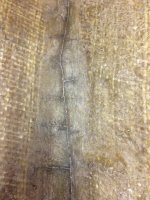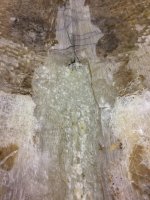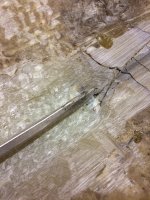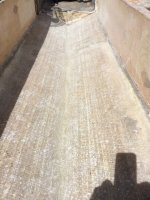Pulling the boat out of the shop and into my driveway today to do massive grinding. I already have too much fiberglass dust in my shop.
Just so you don't feel so bad.
My 1969 mako had some of that around the bilge area, however mine did not go that deep and my epoxy wasn't that deep either. as it wasn't puddled against stringers.
Mine (I think)is what is called minor spider web cracking.
I simply sanded with belt sander and aggressive orbital sander and along with filling the corner voids where the hull meet the transom with a hairy mesh in holes under air bubble pockets.
as kcassells says and he is correct. Factory boat guys are slobs.
(at the back corner riser (I will call it)and along the bottom where the hull turns up to the transom, The back "U" if you will.. both ways. bottom to top and front to back.
I laid 3-5 layers 24 oz. old school woven and I extended that about 18" forward as far as I had the stringers cut away at the time for transom replacement. I don't have or have not purchased any 1708.
Best I can tell, the hull right there "was" about or almost 1/4'.. I figure its now 5/8"- 1/2" it seems to really for sure be solid now.
This cracking you see is exactly why I use milled fiber and or chopped strands in my PB. and I know that may be getting slightly off topic.
But its along the same lines. From what I have been told by some resign dealers and 2 of these blend and make their own epoxies and resigns.(1 in Calif & 1 in Fla.)
They tell me extra epoxy is no good without glass. It almost always will crack at stress or flex points without glass. And PB to my findings is even more brittle without some help when you start adding fumed silica or thickening agents. I cut up my scrap ravelings real fine and mix that sometimes to thicken, and that makes things really tough.
What you're doing is looking good. You get some glass laid down with some 'goo' lol. and I think you will feel much better.

























